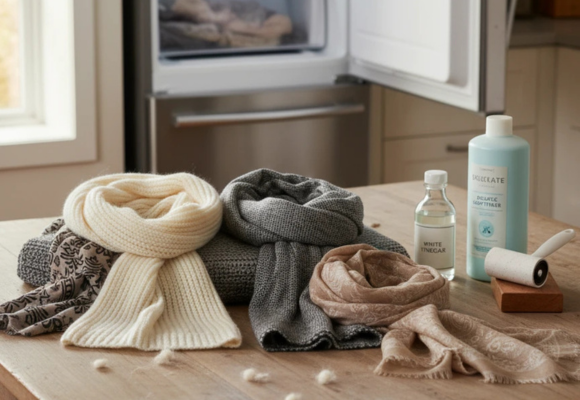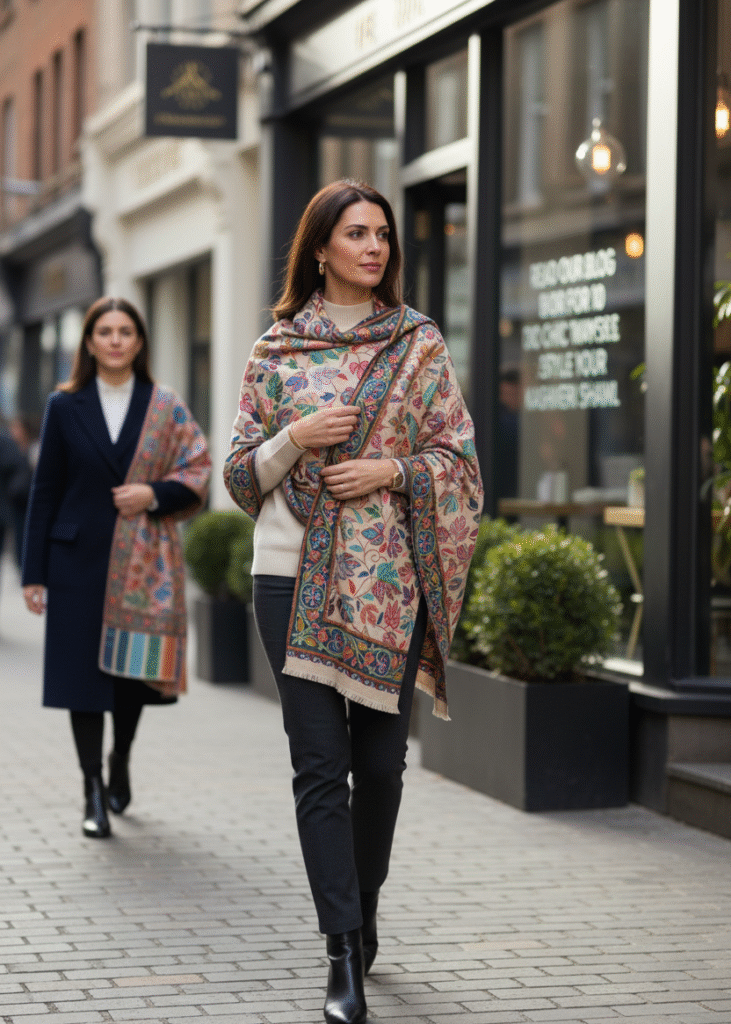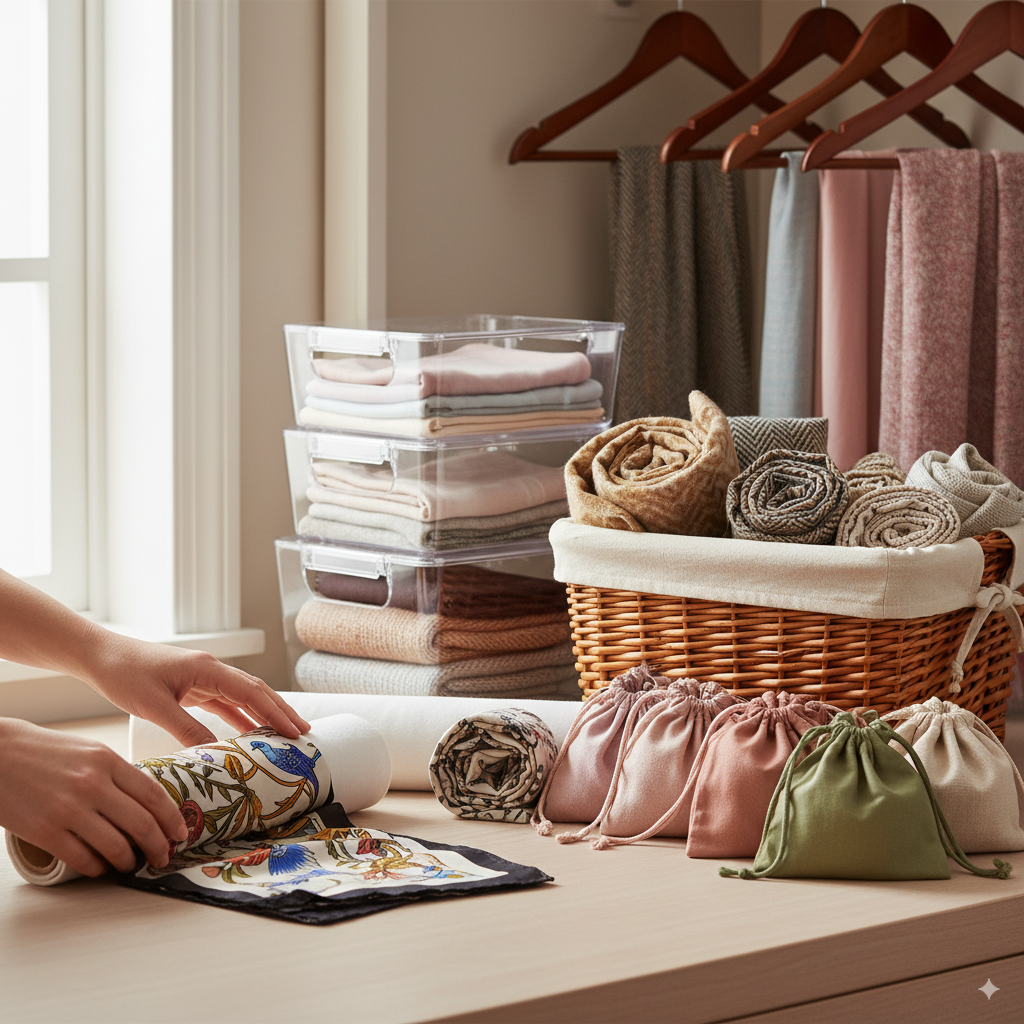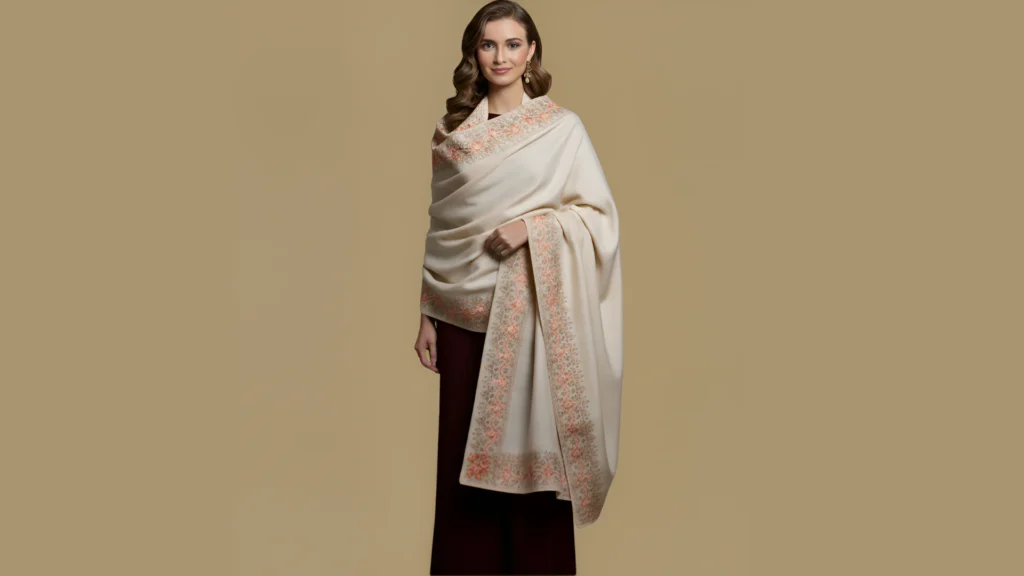Natural fibers like cashmere, wool, and cotton create scarves of extraordinary softness and warmth, each thread carrying the inherent beauty of its origin. When these precious fibers occasionally release from their weave, particularly in a scarf’s early days, it speaks to their authentic, unprocessed nature. This gentle release of fibers, what we call shedding, is actually a hallmark of authentic, quality scarves, a natural expression of their handcrafted origins.
Shedding can range from a few stray threads to more noticeable fuzz. The amount often depends on the type of material, the way the scarf is made, and how it is handled. Understanding what causes shedding and what level is expected makes it easier to care for your scarf.
Understanding the gentle nature of these precious fibers, and the artisanal methods that bring them to life, reveals why this natural characteristic emerges and what to expect from your treasured piece. If you’re wondering how to stop scarf from shedding, the methods outlined in this guide will help you maintain the beauty and integrity of your scarf, allowing it to settle into its most refined state.
Why Scarves Shed and What is Normal
Learning how to stop scarf from shedding begins with knowing what causes it. When loose fibers naturally work their way out of the fabric, it’s part of the material’s natural behavior, especially for wool, cashmere, and cotton. This gentle release of fibers is expected in the first few wears, but there are ways to minimize shedding after the initial period.
Staple length refers to how long each individual fiber is before it gets spun into yarn. Short fibers have more loose ends that can escape from the fabric. Long-staple fibers, like those in high-quality cashmere or premium cotton, stay locked in place better.
The way your scarf is made also matters. Loose knits have more space between threads, giving fibers room to move around and fall out. Tight weaves hold everything together more securely.
New scarves often shed more at first. This break-in period usually lasts for the first few wears, then the shedding settles down naturally.
Quick Methods to Stop Shedding Fast
These gentle, time-honored methods help your precious scarf settle into its most refined state:
Place in Freezer Overnight
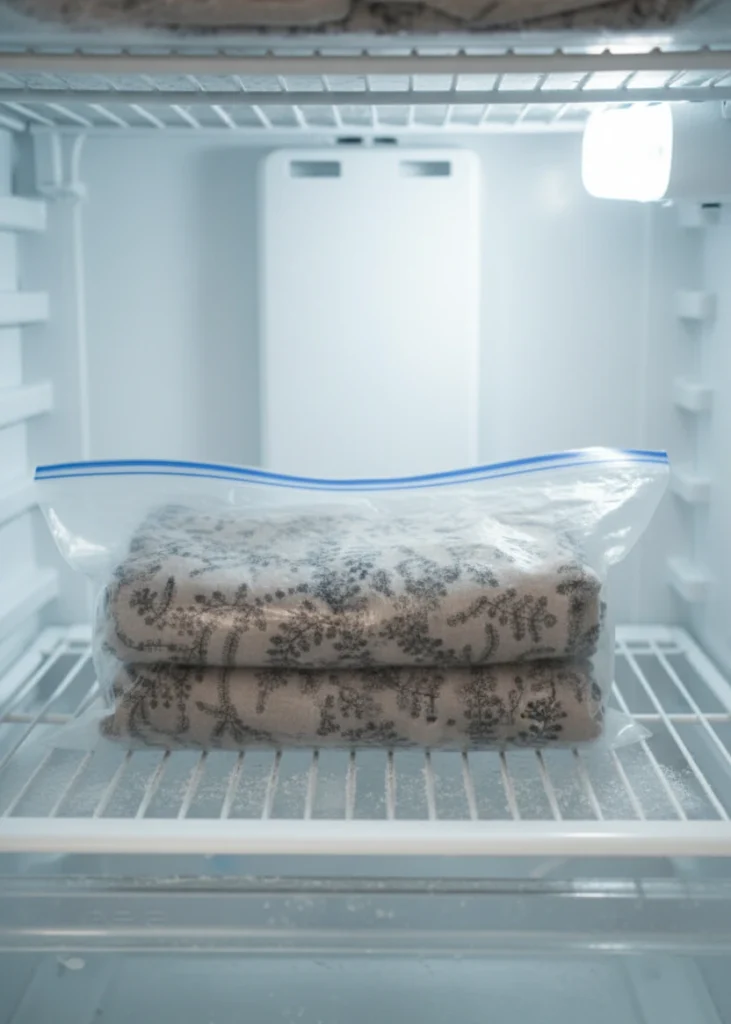
For wool and cashmere scarves, fold your scarf and place it in a clean plastic bag. Press out the air and freeze overnight. The gentle cold encourages wayward fibers to settle peacefully into their intended place within the weave. This method works particularly well for stop wool from shedding and stop cashmere scarf from shedding issues.
Cold Vinegar Rinse
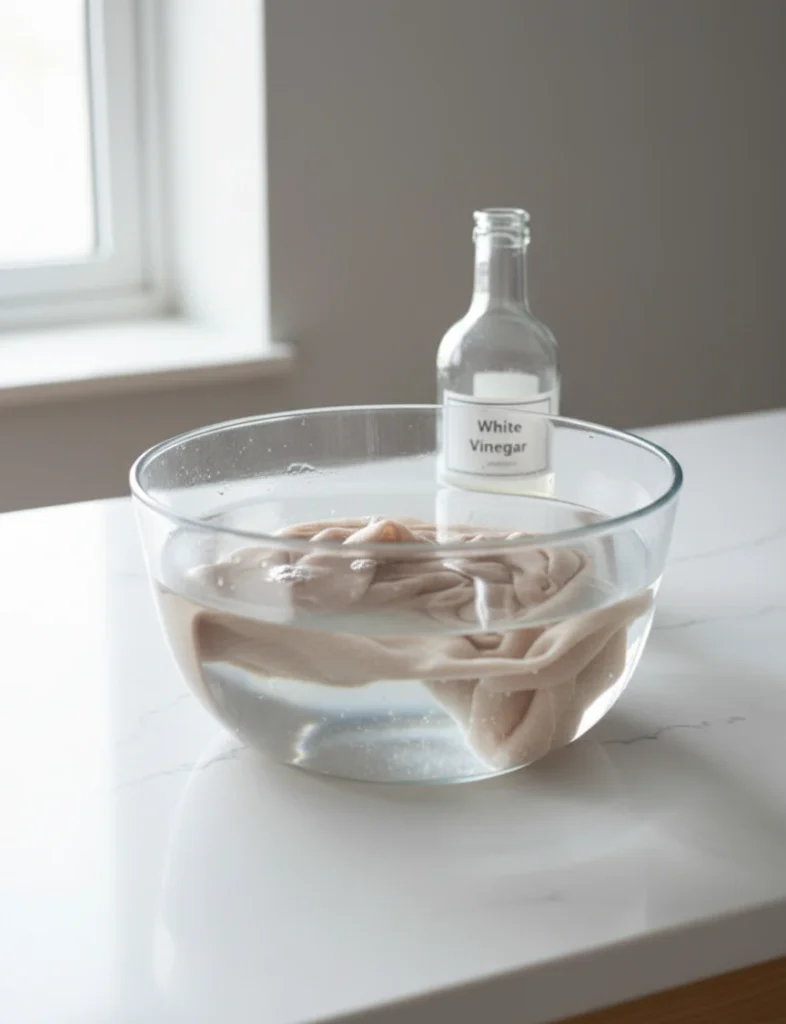
Mix one tablespoon of white vinegar with one quart of cold water. Soak your scarf for 10-15 minutes, then rinse with clean cold water. The mild acid helps set the fibers in place and can prevent future shedding.
Gentle Fabric Softener Bath
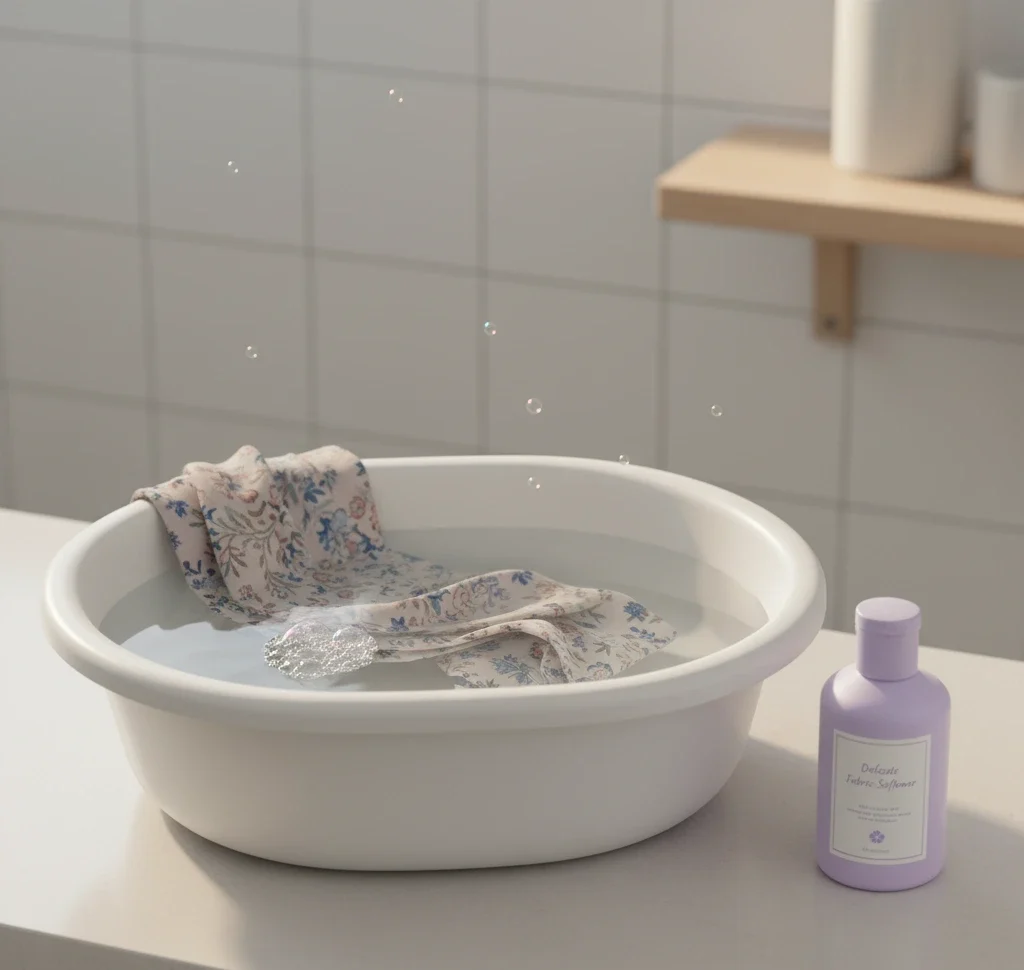
Add one teaspoon of gentle fabric softener to a basin of cold water. Submerge your scarf and swish gently for a few minutes. This reduces friction between fibers. Rinse thoroughly afterward to remove any residue.
Use a Lint Roller Properly
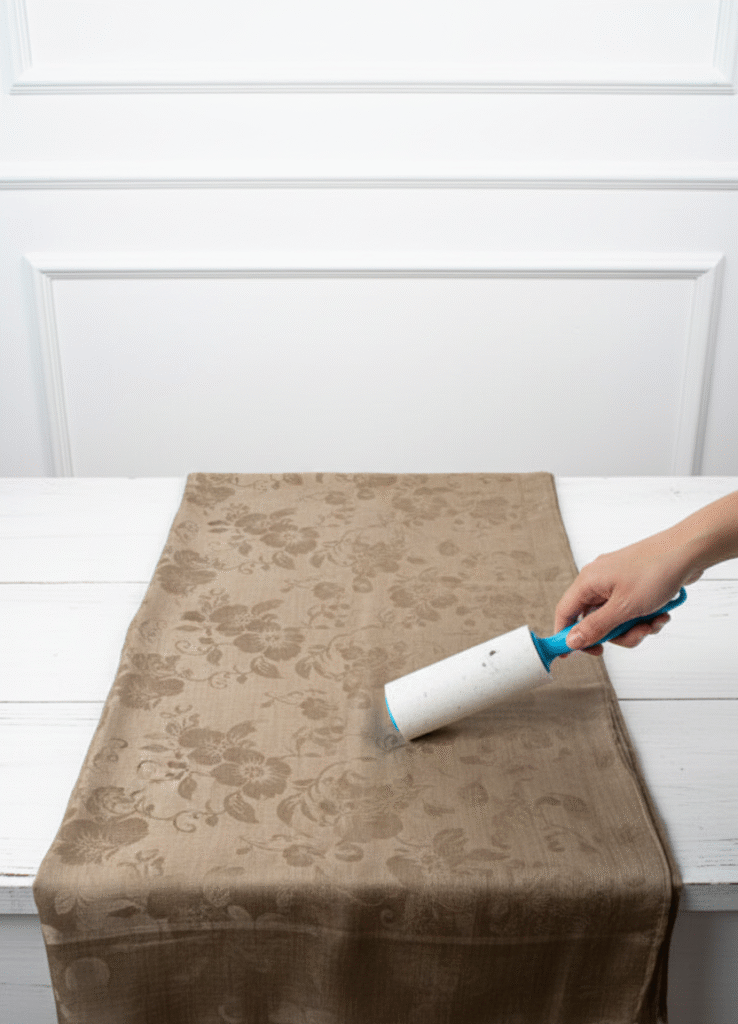
Lay your scarf flat and roll the lint roller in one direction only with light pressure. Rolling back and forth can actually pull more fibers loose or distort the fabric.
Different Fixes for Different Fabrics
Each type of fiber responds differently to anti-shedding treatments, so understanding how to stop scarf from shedding depends on the material. Here’s what works best for each fabric:
Cashmere and Pashmina
These exquisite fibers, born from the high altitudes of the Himalayas, respond beautifully to the gentle embrace of cold. When cleansing becomes necessary, honor their delicate nature with cool water and the gentlest of cleansers designed for such precious materials. Hand wash in cold water with pH-neutral detergent designed for delicates. Heat and rough handling will make shedding worse.
Pashmina carries within its fibers the whispered stories of Himalayan heights, drawn from the precious undercoat of mountain goats who brave the world’s most challenging peaks. Such extraordinary origins deserve care that honors their remarkable journey.
Wool Scarves
Merino and other wool types are slightly tougher than cashmere. After washing, you can use a brief air-fluff cycle in the dryer with clean towels to help remove loose fibers. Watch carefully and use no heat.
Cotton and Linen
These plant-based fibers can handle a short, low-heat dryer cycle to shake loose any extra lint. Always pre-wash in cold water first to minimize initial shedding.
Synthetic Materials
Acrylic and polyester scarves shouldn’t shed much at all. Synthetic materials, by their very nature, should maintain their structure consistently. If you notice unusual fiber release, it may indicate the piece lacks the authentic handcrafted qualities that make natural fiber scarves so treasured.
Step-by-Step Deep Care for Valuable Scarves
For scarves that hold special meaning in your heart, whether through their exquisite craftsmanship or cherished memories, this mindful approach honors their significance:
Hand Wash with Mild Detergent
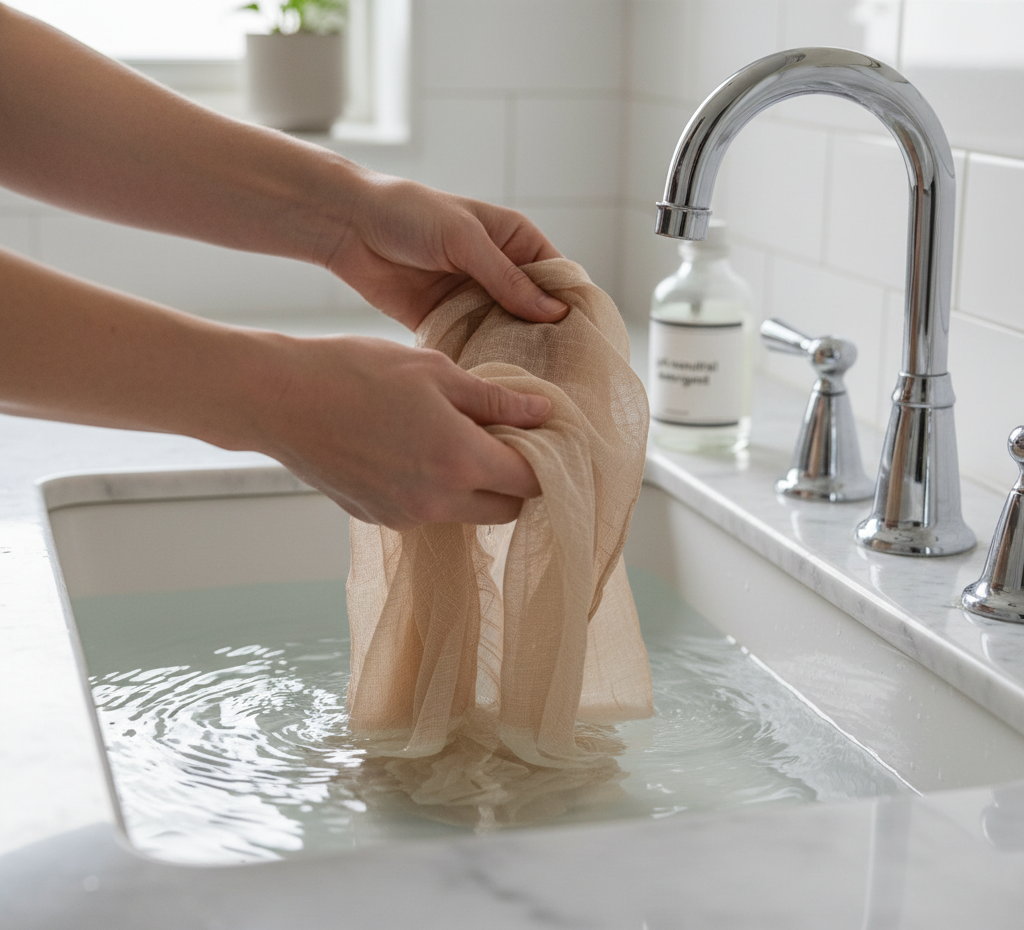
Fill a basin with cold water and add a small amount of pH-neutral detergent made for delicate fabrics. Submerge your scarf and gently move it around for 2-3 minutes. Never scrub or twist the fabric.
Remove Water Without Wringing
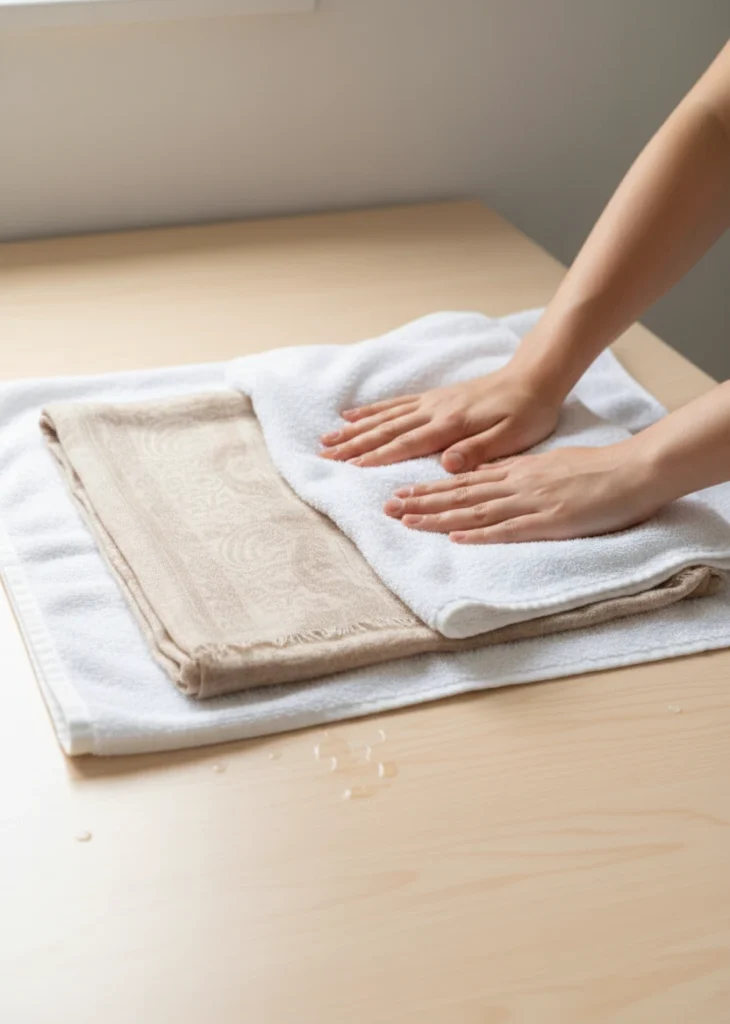
Lift the scarf carefully, supporting its weight to prevent stretching. Press it between clean towels to absorb water. Wringing or twisting puts stress on fibers and increases shedding.
Dry Flat Away from Heat
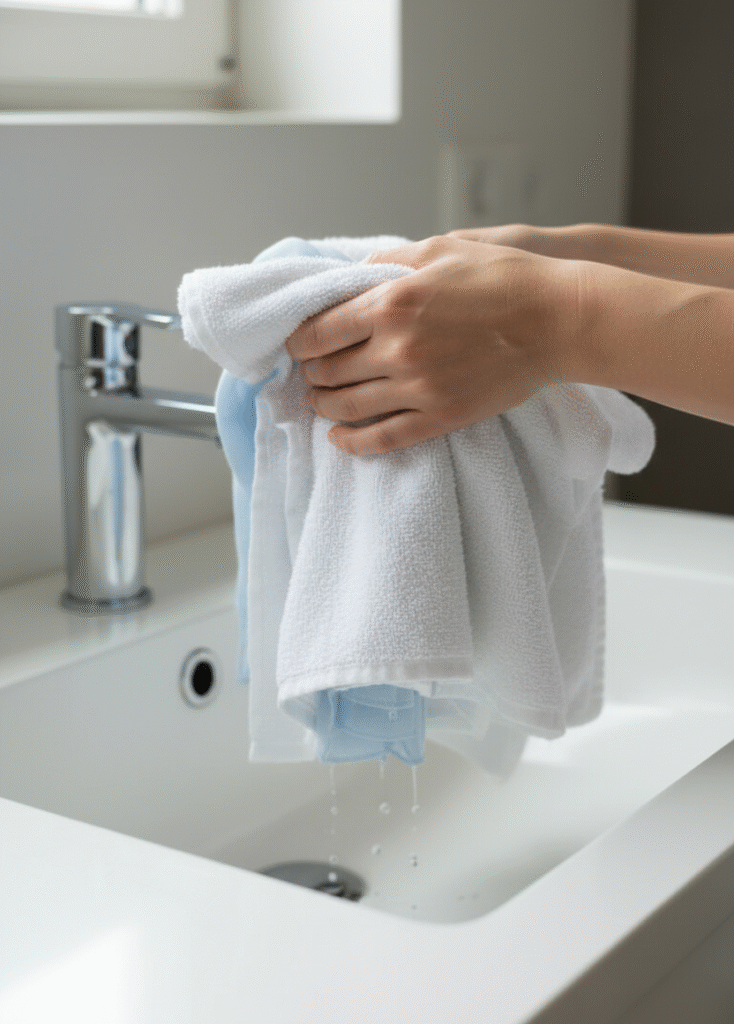
Lay the scarf on a dry towel in its natural shape. Keep it away from direct sunlight and heat sources. Reshape the edges if needed and let it air dry completely.
Finish with Light Steaming
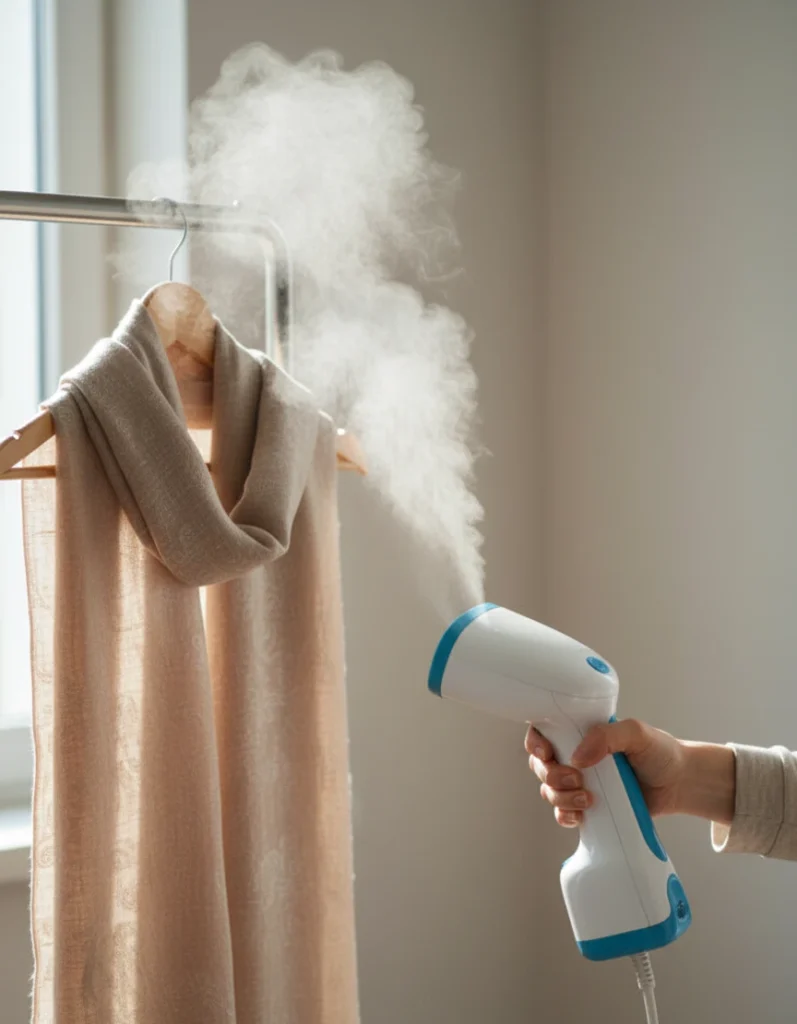
Once dry, use a steamer at a safe distance to relax the fibers. This helps set them in place and reduces future shedding. Avoid direct contact with the steam.
Preventing Future Shedding
Simple habits can keep your scarf looking its best:
- Rotate between scarves: Wearing the same scarf daily creates constant friction that breaks fibers
- Choose smooth outer layers: Rough coat textures catch and pull scarf fibers
- Store in breathable bags: Cotton or muslin bags protect from dust while allowing air circulation
- Add natural moth protection: Cedar blocks or lavender sachets protect wool and cashmere without direct contact
Removing Pills Without Damage
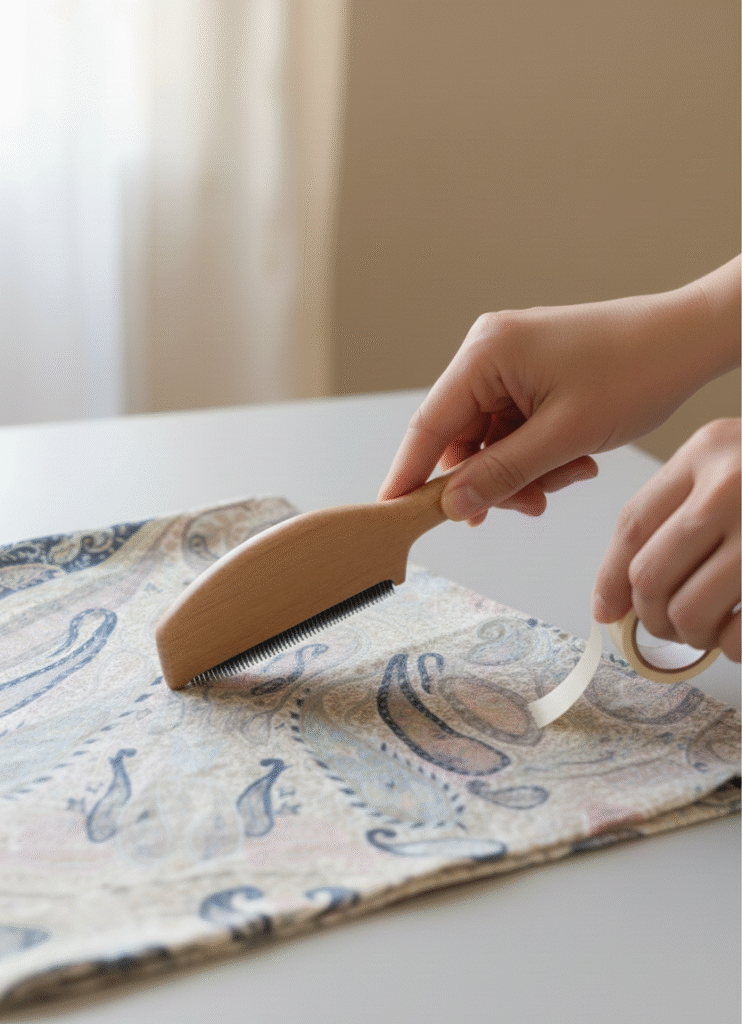
Pilling creates small balls of tangled fibers on the surface – this is different from shedding. Remove pills carefully to avoid damaging embroidery or the weave structure.
For manual removal, use a fine sweater comb with gentle strokes in one direction. Electric fabric shavers work on sturdy knits when set to the lowest setting, but test on a hidden area first.
For embroidered sections, press low-tack masking tape onto pills and lift away. This removes pills without disturbing delicate threads.
When to Seek Professional Help
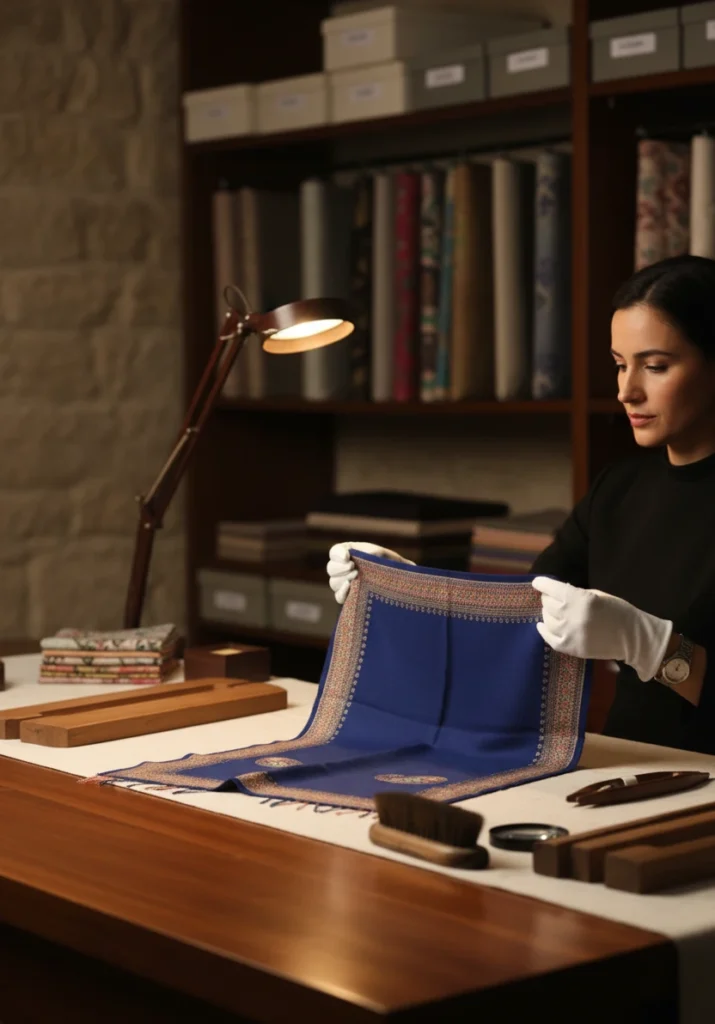
Consider professional scarf cleaning or reconditioning when:
- Heavy shedding continues after multiple home treatments
- You notice thinning areas, holes, or distorted fabric
- The scarf has high sentimental or monetary value
Professional services can cleanse, reshape, and re-block scarves to restore their structure and reduce fuzz. Professional artisans understand the intricate needs of luxury scarves, offering specialized services that honor the time and skill invested in each piece. This thoughtful maintenance preserves not just the scarf’s beauty, but the heritage and story woven into every thread.
Quality Construction Reduces Shedding
Scarves born from superior craftsmanship naturally embrace their form with greater permanence. The long-staple Himalayan Pashmina fibers we treasure at Kashmir Bloom carry within them an inherent stability, fewer loose ends mean fewer farewells to wayward threads. Hand-twisted yarns create tighter weaves that secure fibers better.
These construction methods, refined over generations by skilled artisans, result in scarves that maintain their beauty with minimal scarf care requirements. Each piece reflects the patience and precision that defines true craftsmanship.
FAQs About How to Stop Scarf from Shedding
Does freezing cashmere scarves damage their natural softness?
Freezing briefly stiffens fibers without removing natural oils or changing the cashmere’s soft texture, provided you use a sealed bag and allow gentle thawing.
Will white vinegar fade the colors in my handwoven scarf?
Properly diluted white vinegar typically sets dyes rather than fading them, but always test on a hidden corner first to be safe.
Can I use my dryer’s air-fluff setting instead of laying scarves flat to dry?
Air-fluff works for sturdy cotton and some wool scarves, but hand drying remains safest for cashmere, fine wools, and any scarf with embroidery.
How often should I repeat freezer treatment on my wool scarves?
Most scarves need freezer treatment only once. Frequently worn pieces may benefit from seasonal repeats of freezing or vinegar rinsing.
Looking for the perfect finishing touch to your look?
Stop by Kashmir Bloom, 1532 Pershore Rd, Birmingham, to see and feel our collection in person. From styling ideas to storage solutions, we’ll help you make the most of your scarf. Contact us at hello@kashmirbloom.com or 0121 798 0032 to book a styling appointment.

